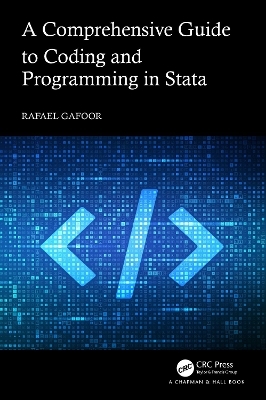
A Comprehensive Guide to Coding and Programming in Stata
Chapman & Hall/CRC (Verlag)
978-1-032-77565-4 (ISBN)
This book is an introductory guide to programming and coding in Stata. Commonly encountered code in the field of medical statistics as well as the analyses of observational data are presented.
For those who are involved in the analyses of observational studies, the need to sometimes assemble large datasets will necessitate a detailed understanding of loops and macros. This book covers these materials early on and then describes other commonly required coding commands.
For those who program in a controlled environment (.e.g. medical statisticians who perform analyses for regulatory bodies), the production of log files, a suggested folder structure and analysis pathway are covered. This book also includes a wide range of tabulation commands and other methods of producing tables of descriptive statistics. The text also then provides a clear explanation of how to perform some inferential analyses (including how to extract and format the coefficients for use in subsequent reports).
The focus on coding allows beginners to grasp the basics of coding and programming, as well as allowing established researchers to hone their skills and become more advanced programmers.
Key Features:
Covers the fundamental of using and understanding Stata.
Able to be used by anyone looking to learn the basics of coding.
Introduces and explains difficult concepts such as macros from the outset.
Rafael Gafoor is a Chartered Statistician at the Comprehensive CTU at University College London (UCL). Dr. Gafoor obtained both his master’s degrees in Epidemiology and Medical Statistics from The London School of Hygiene and Tropical Medicine and his PhD from the Institute of Psychiatry (King’s College London). He has worked as a medical statistician as well as an epidemiologist. His research interests include epidemiology, clinical sciences, public health and health services and systems. Dr. Gafoor is a consultant psychiatrist in the NHS and has a keen interest in the analysis of datasets with Mental Health outcomes (from both observational as well as experimental studies).
Foreword
1. Introduction
2. Temporary names, variables and files
3. Macros and other data storage mechanisms used by Stata
4. Variables, variable names, value label names, value labels & values
5. Loops
6. Append, Merge & Collapse
7. Reshape
8. Dates
9. BITS & BOBS
10. Helpful hints when doing regression
11. Time series operators and survival analyses
12. Exporting output
13. Stata Programming
14. Tables of Baseline Characteristics
15. Automated Reporting
16. pretty_baseline package for easy tables
17. Tables with output from statistical tests
| Erscheinungsdatum | 10.07.2024 |
|---|---|
| Zusatzinfo | 4 Line drawings, black and white; 4 Illustrations, black and white |
| Sprache | englisch |
| Maße | 156 x 234 mm |
| Gewicht | 317 g |
| Themenwelt | Sachbuch/Ratgeber ► Gesundheit / Leben / Psychologie |
| Mathematik / Informatik ► Mathematik | |
| Studium ► Querschnittsbereiche ► Epidemiologie / Med. Biometrie | |
| Naturwissenschaften ► Biologie | |
| ISBN-10 | 1-032-77565-3 / 1032775653 |
| ISBN-13 | 978-1-032-77565-4 / 9781032775654 |
| Zustand | Neuware |
| Haben Sie eine Frage zum Produkt? |
aus dem Bereich


